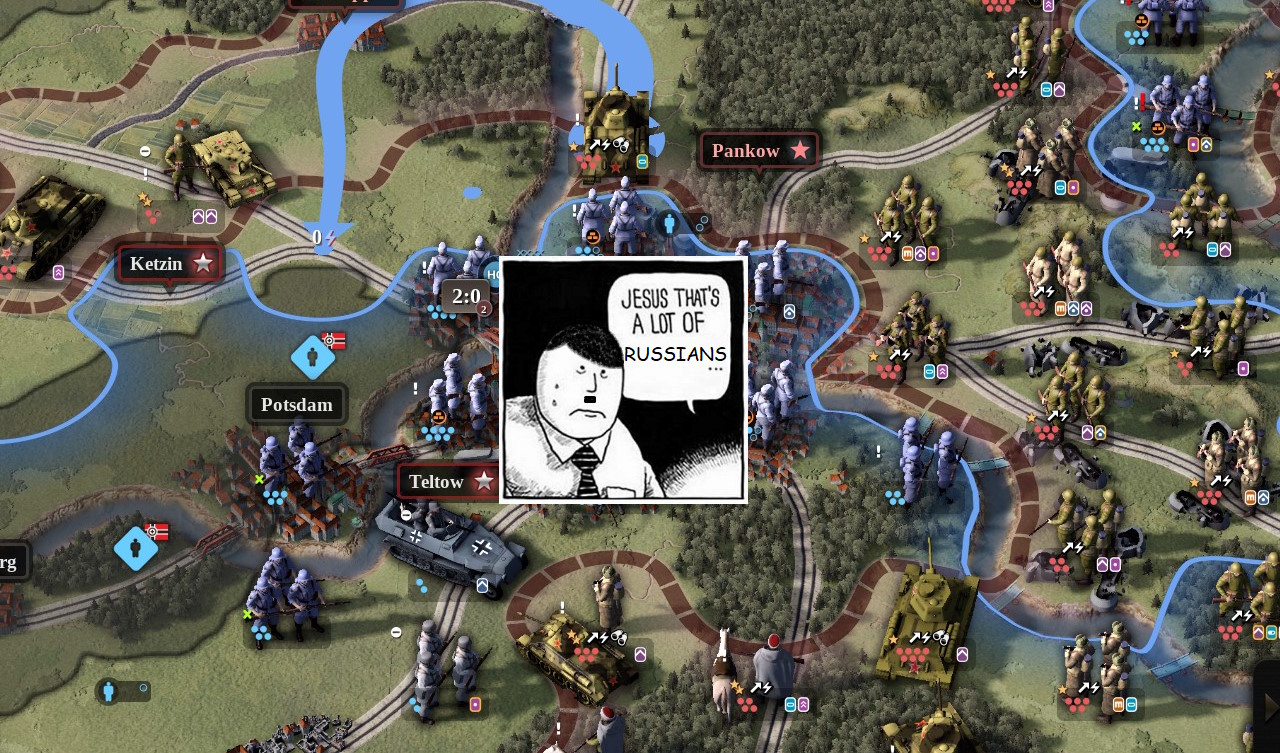On June 22, 1944, the Red Army launched Operation Bagration with an apocalyptic artillery bombardment. Almost two months later, the German Army Group Center was functionally destroyed. Crucial Nazi forces would be diverted to stem the tide, allowing the Red Army to overwhelm the now-depleted sectors. It would open the path deeper into the heart of the Third Reich and Berlin would fall within the year. That’s what you’ll be doing in Unity of Command II: Berlin DLC.
This latest – possibly last DLC – is as grandiose as the events that inspired it. The Soviet campaign – Victory in the East (Berlin) is 25 missions long, only surpassed by Victory in the West in length. No alternate tracks, just 25 scenarios of pulse-pounding, Nazi-grinding action. In the conferences, you’ll be able to upgrade 1st-through-6th Tank Armies, but in scenarios you’ll also control fronts, which will provide the majority of your infantry backup.
Full frontal operations
It makes some sense from a game design perspective. Tank armies are the most exciting parts of your forces and they require the most finesse to control in the field. In a scenario, a tank army controls around 3 armored and mechanized corps – they’ll be the ones breaking through, destroying the enemy units and moving into the operational depths.
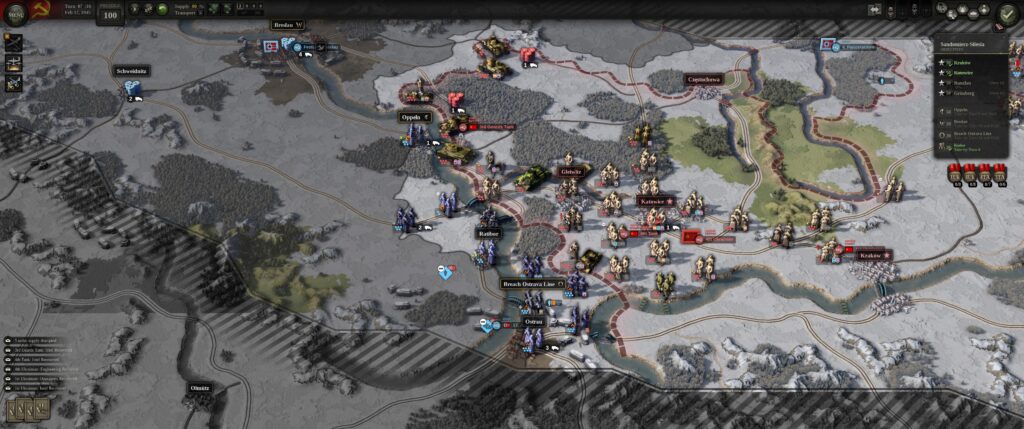
If the fronts were broken down to the same level, then, just from the 1st Ukrainian during the Lvov-Sandomierz Offensive, you’d get 1st Guard Tank, 3rd Guards Tank, 4th Tank, 3rd Guards, 13th, 38th and 60th armies. Way too much to handle and, considering how each of those commands would be providing Command Points, collecting stragglers, etc., it may end up being overpowering in the field while also sapping prestige points in conferences.
Besides, only at this scale and size do you get to truly witness the monumental accomplishment of Bagration and subsequent operations. It not only destroyed nearly every division in Army Group center, it also saw Soviet divisions covering an astounding amount of ground in a very short time. You’ll get your smaller scenarios in Crimea and relieving Leningrad, but the real meat is controlling earth-shattering forces and crossing countries in days.
With no alternative tracks, the campaign bakes in some of the what-if scenarios into your historical track. The most obvious one is saving the Slovak National Uprising, which would make Banska Bystrica a Czechoslovak gap in the German defenses in the Carpathians. For others, it’s hard to tell. What do I get from crushing the Courland Pocket before the end of the war, besides the prestige points? Hard to say!
Paying for tank corps out of pocket
The prestige points will be coming and going fast in this title. Since the tank armies are small formations focused on, well, tanks and mechanized infantry, they don’t need upgrades like river crossing (which these units can’t do) or free straggler reorganization (since you’re unlikely to have much). You’ll instead spend them to reinforce units at the start of scenarios, filling them out with steps and specialists.
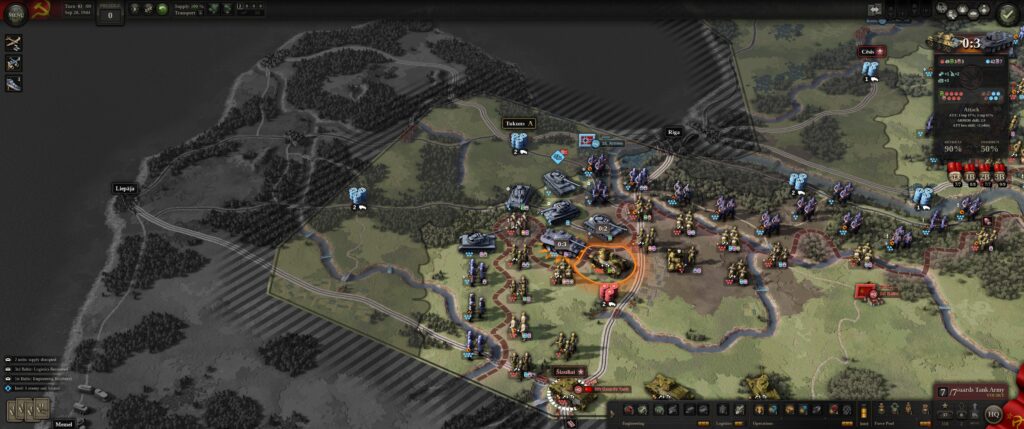
Everybody knows how easy the Engineer specialists die in Unity of Command II. With 25 scenarios to grind through in Berlin DLC‘s premier campaign, you’ll see even the most benign dice tests turn bloody quite a few times.
It’s also exhilarating, having huge tableaus of upgrades to choose from. Some of the most modern stuff, like having a step of beastly ISU-152, will cost over a 100 prestige. This is enough to give Katyushas to six other formations. The choice is yours – however, since the battles are so deadly and (especially armor) stragglers rare, you’ll be spending most of your purse on replacements.
But when the buying ends, the fun begins. In the Berlin DLC, the new lean and mean Soviet rifle corps can, with three specialist steps, push aside German divisions (now closer to brigade-sized), sometimes even without a command point investment. Only enemies entrenched in adverse terrain will be an issue, and that’s another reason why tank army-front distinction exists.
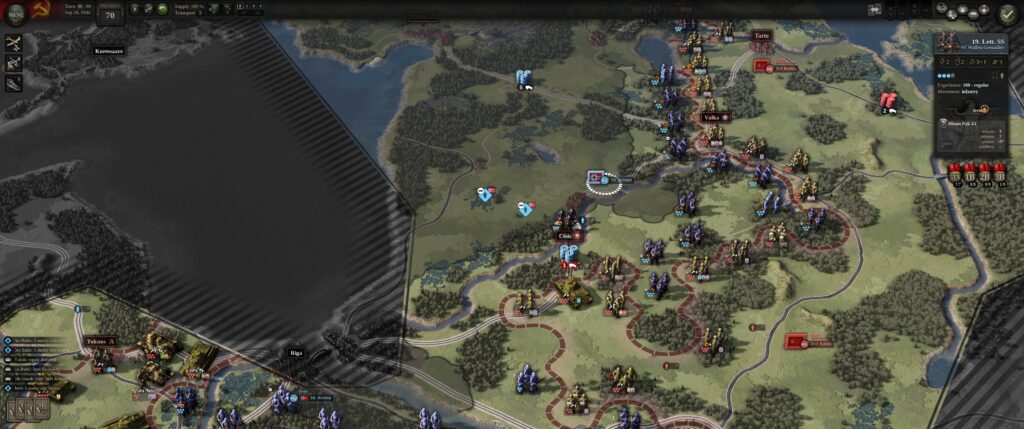
The Soviet tactics call for tanks to bypass areas of strong resistance, instead driving ever deeper into the enemy rear. The foot infantry – the rifle corps – can then surround the enemy positions and destroy them at their own pace.
Finally, the Nazis get to themselves feel how it is to be encircled and starved!
Some tactical snags
Meanwhile, the player is treated to the full rainbow of forces arrayed in the Eastern Front. The Germans aren’t just a division after division of Grenadiers, it’s also all sorts of nationalist SS collaborators, reservist units, Hungarians, Romanians.
On the Soviet side, your forces are much more uniform, but you still get joined by Czechoslovaks, partisans, Poles, Bulgarians, Romanians… Their units might not have such fancy names like Div z.v.b. 300, an SS unit of Estonian border guards, but they have their own specialists and models – and the fact that they’re not Nazis.
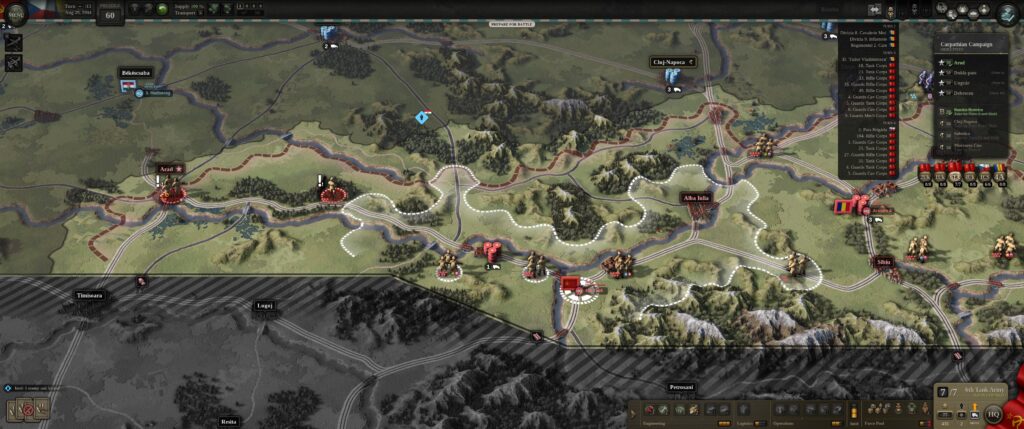
Now, I should not forget that the Berlin DLC also features a German campaign. 4 main, 3 alternate missions – Balaton 45 is a short exercise in trying to defend Hungary. The last, irreplaceable panzer forces that were wasted in counter-attacks will be yours. You’ll have to be really smart about how you use them, since Soviets will ruthlessly pursue their destruction.
Though in all fairness, I finished one of the missions having nearly wiped the map. Unity of Command II has already shown us scenarios we’re you’re the loser, but in the Berlin DLC, this isn’t the case. Then again, that’s an issue for all games – how do you depict loss in a way that’s realistic and fun? It’s like 50% of the reason why we don’t have a Call of Duty game from the Nazi perspective – kind of hard to sell losing when just by the virtue of FPS conventions you are meant to single-handedly shoot hundreds of guys.
DLC Good
In summary, I liked Unity of Command II: Berlin DLC. I wish I had more time to play it instead of marathoning Bagration like I was trying to beat the record. But overall, it would be a fine DLC to end the game’s run on. Who knows, maybe the lads will tackle the Pacific next…

